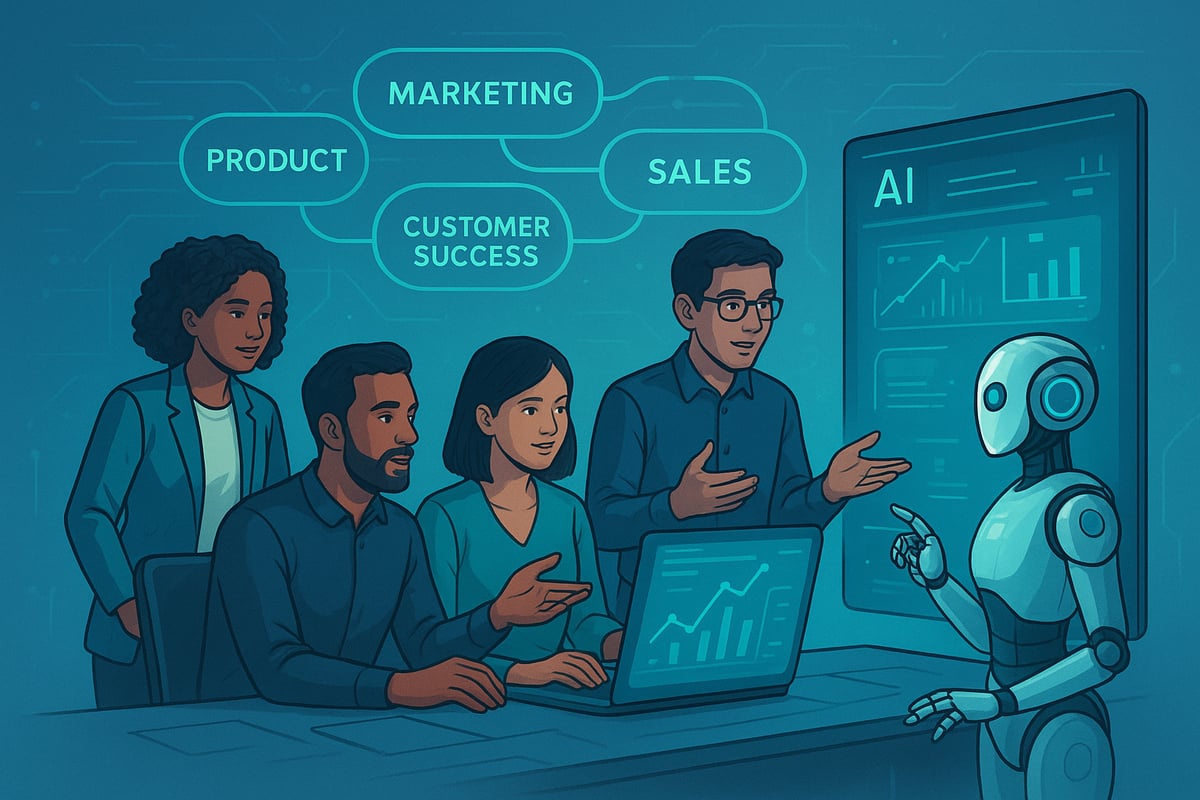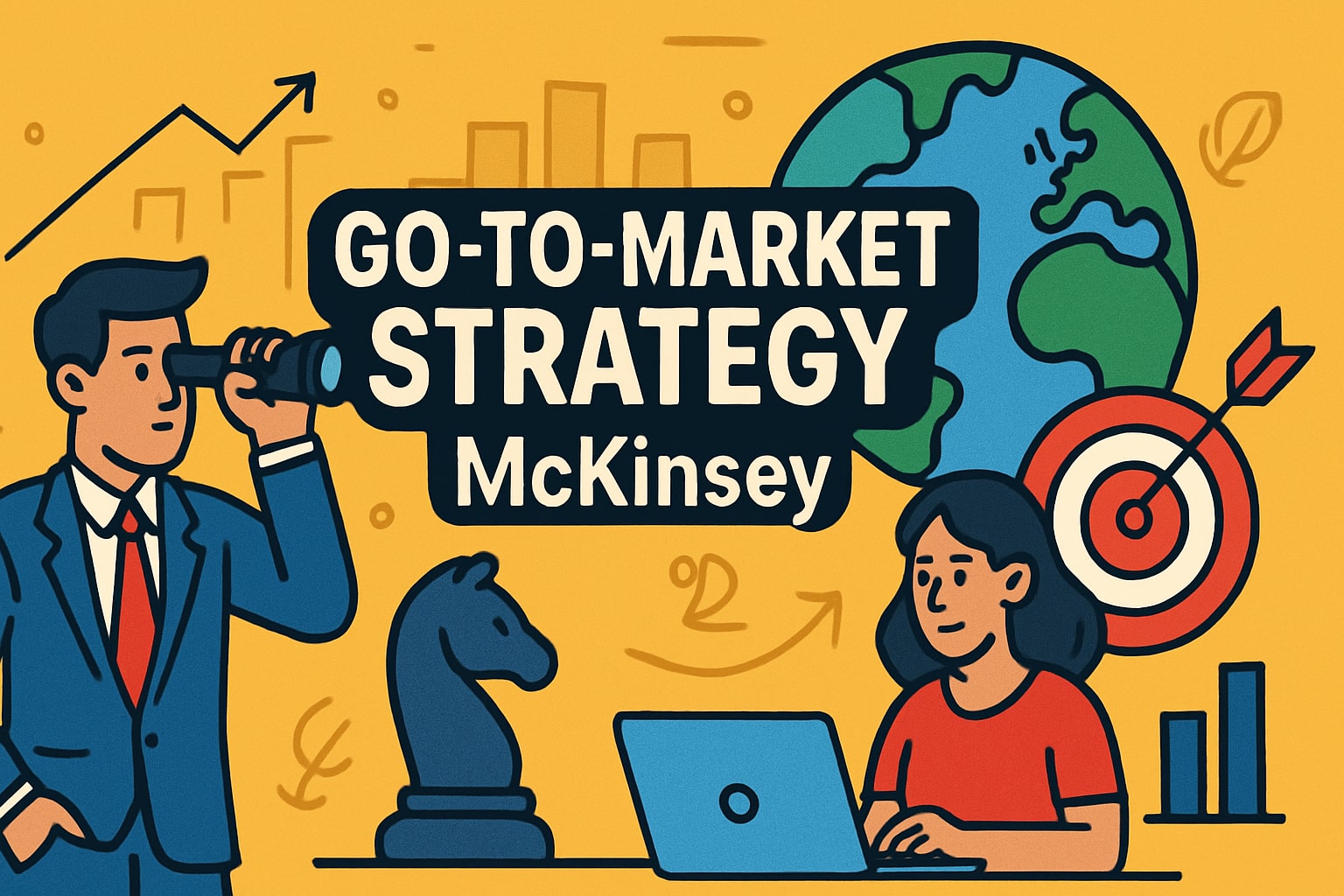Go To Market Team Guide: Strategies For Success In 2025


The go to market team stands at the heart of B2B SaaS growth in 2025, driving revenue and shaping competitive advantage in a rapidly shifting landscape. As AI, Agentic Automation, and evolving buyer expectations rewrite the rules, traditional silos are dissolving in favor of agile, unified teams.
This guide delivers actionable strategies for assembling, aligning, and optimizing your go to market team for measurable results. You’ll discover how to:
- Structure high-performing GTM units
- Define core roles and responsibilities
- Foster cross-functional alignment
- Leverage AI and Agentic Automation for scale
- Measure success with data-driven KPIs
- Prepare for the future of GTM execution
Ready to transform your approach? Let’s dive in and empower your team to outperform the market.
Defining the Modern Go-To-Market Team Structure
The go to market team has transformed dramatically in recent years. No longer confined to rigid silos, today’s teams operate as integrated, cross-functional units where product, marketing, sales, and customer success work side by side. This unified approach is now essential for B2B SaaS and enterprise software companies aiming to accelerate growth and outpace competitors. For a deeper dive into the foundational concepts behind building an effective go to market team, check out Go-to-Market Team Fundamentals.
There are several successful models shaping the modern go to market team:
- Centralized model: All functions report to a central GTM leader, streamlining communication and strategic direction.
- Pod-based model: Small, agile groups combine representatives from each function, driving rapid experimentation and iteration.
- Hybrid model: Combines central oversight with agile pods for maximum flexibility.
Alignment is not just a buzzword. According to Wrike and GTM Alliance, companies with aligned go to market team structures achieve up to 25% faster revenue growth. These organizations break down barriers by unifying goals, KPIs, and workflows across all customer-facing departments.
Senior leadership, especially the GTM manager and product marketer, play a pivotal role in fostering team cohesion. They ensure clear ownership of every function and champion transparent communication through regular standups, shared dashboards, and open feedback loops. In the fast-moving SaaS landscape of 2025, adaptability and agility are mission-critical traits for every go to market team.

Core Roles and Responsibilities in a High-Performing GTM Team
A high-performing go to market team thrives on clear responsibilities, advanced technology, and seamless collaboration. Each role is essential to driving B2B SaaS growth and ensuring every function works in harmony. Let’s explore how these roles shape success in 2025.

Product Marketing Manager: The Voice of the Market
The product marketing manager in a go to market team translates customer needs into compelling product positioning and messaging. They:
- Conduct AI-enhanced market research to identify trends.
- Develop launch strategies tailored to buyer personas.
- Use competitor analysis to refine go to market plans.
For example, by leveraging Agentic AI, PMMs can rapidly test messaging variations and optimize campaigns for each segment.
GTM Manager & Product Manager: Strategy and Execution
The GTM manager orchestrates launch plans, resource allocation, and cross-team collaboration. The product manager ensures product-market fit and aligns the roadmap with evolving customer demands.
Together, they:
- Define launch tiers and milestones.
- Coordinate stakeholder feedback using shared dashboards.
- Adapt quickly to market shifts with AI-powered insights.
This partnership is the backbone of every successful go to market team.
Sales Enablement & Customer Success: Revenue and Retention
Sales enablement managers equip sales teams with up-to-date product knowledge, AI-driven training tools, and real-time objection handling. Customer success managers focus on onboarding, retention, and integrating customer feedback into the go to market team strategy.
- Use dashboards to monitor churn and upsell opportunities.
- Automate onboarding with Agentic Automation.
- Share insights for continuous GTM improvement.
Marketing, Sales, and Customer Success Teams: Unified Execution
The marketing team generates demand and communicates value, while sales nurtures prospects and drives pipeline growth. Customer success ensures satisfaction and renewals, feeding critical insights back to leadership.
Unified teams are proven to outperform siloed ones. For actionable strategies on building a better go to market team, see Building a Better Go-to-Market Team: A 2025 Guide to B2B GTM Strategy Success.
Cross-Functional Alignment: Breaking Down Silos for Revenue Growth
Siloed teams can cripple a go to market team’s ability to grow pipeline and ARR. When product, marketing, and sales operate independently, misaligned priorities and disconnected KPIs create friction that slows deals and confuses customers. Modern B2B SaaS companies know that without cross-functional alignment, even the best products can miss their market window.
To break down silos, leaders are adopting shared KPIs and operational dashboards. Instead of tracking isolated activities, teams measure unified outcomes like pipeline contribution and ARR impact. As highlighted in the Cross-Functional GTM Alignment Guide, successful organizations run regular cross-team standups, use shared dashboards, and review campaigns together. Enablement playbooks and transparent goals keep everyone focused.
Consider this: SaaS companies that hold monthly GTM syncs report 30% higher campaign ROI. Leadership buy-in is critical, especially when leveraging Agentic AI to automate reporting and surface insights. An aligned go to market team not only reacts to change, but thrives on it, turning collaboration into measurable revenue growth.

Leveraging AI and Agentic Automation in GTM Execution
In 2025, the go to market team faces a new reality: Agentic AI is not just a buzzword, but a game-changer for B2B SaaS growth. Imagine AI-powered agents orchestrating your GTM motions, learning from every interaction, and freeing your team to focus on high-impact strategy.

What Is Agentic AI in GTM?
Agentic AI refers to autonomous software agents that act on behalf of the go to market team. These agents handle tasks like:
- AI-powered lead scoring and qualification
- Automated campaign management and optimization
- Predictive analytics for pipeline forecasting
Practical Applications for GTM Teams
Forward-thinking SaaS companies deploy Agentic AI to:
- Equip sales reps with real-time objection-handling suggestions
- Personalize outreach at scale based on behavioral data
- Automate customer onboarding and monitor churn risk
- Orchestrate cross-functional workflows, reducing manual busywork
According to industry reports, companies leveraging AI in GTM functions experience up to 35% faster time-to-market. For deeper insights into how AI is reshaping GTM, see the 2025 GTM Forecast: Key Shifts Redefining the Future of Go-to-Market Strategy.
Balancing Human and AI-Driven Execution
While Agentic AI accelerates decision-making, human expertise remains vital for creative problem-solving and building trust. The go to market team that blends data-driven automation with authentic customer connection will lead the next wave of SaaS success.
Measuring Success: GTM Metrics and Data-Driven Decision Making
Knowing what drives your go to market team’s success begins with clear, actionable metrics. In 2025, high growth SaaS companies measure more than just activities—they focus on outcomes that truly impact the bottom line.
Key GTM Metrics:
- Pipeline growth: Tracks new opportunities and sales velocity.
- Annual Recurring Revenue (ARR): Measures revenue predictability and expansion.
- Customer Acquisition Cost (CAC) and Lifetime Value (LTV): Reveal efficiency and profitability.
- Churn rate: Shows retention and customer satisfaction.
- Campaign ROI: Assesses marketing effectiveness.
Unified dashboards are essential for a go to market team, allowing real time performance tracking across product, marketing, and sales. By moving from siloed, activity based tracking to outcome driven KPIs, teams align faster and make smarter decisions.
AI and Agentic Automation now power predictive analytics, automated reporting, and pipeline forecasting. SaaS leaders use these tools to tie GTM activities directly to pipeline health, improving forecasting accuracy and boosting win rates. For a deeper dive into best practices, see Go-to-Market Strategy Consulting.
Regular metric reviews, data literacy, and transparent reporting ensure every member of the go to market team contributes to growth. Continuous optimization, powered by data, is the new norm for teams aiming to lead in 2025’s dynamic market.
Future Trends: Building Resilient GTM Teams for 2025 and Beyond
Looking ahead, the go to market team will face rapid change as AI, automation, and data become central to strategy in B2B SaaS and enterprise software.
Key trends shaping the future:
- Agentic AI and automation will streamline workflows, enabling faster, data-driven decisions.
- Hybrid and remote-first teams will redefine collaboration, requiring new digital playbooks.
- Continuous learning and cross-training will keep teams agile as roles evolve.
- Customer-centricity and rapid experimentation will drive sustained growth.
According to industry projections, teams that embrace automation and unify KPIs will outperform competitors by 2025. For a deeper dive on how to bridge strategy and execution, see The Complete Go-to-Market Strategy Framework for 2025.
Building resilience means investing in adaptable talent, leveraging AI for insights, and staying relentlessly focused on market needs.
As we’ve explored together, building a high performing go to market team in 2025 isn’t just about stacking roles or chasing the latest tech—it’s about storytelling, alignment, and real results. I’ve seen founders and growth leaders like you turn scattered efforts into powerful, unified teams that move the needle on both pipeline and ARR. If you’re ready to write the next chapter in your company’s growth journey, why not start the conversation personally With practical frameworks, hands on leadership, and a track record of helping SaaS innovators scale smarter, we’re here to help you bring your GTM story to life. Book Your Personal Intro Call

Latest From
The Blog
Go To Market Strategy Consulting Guide For 2025 Success

Go To Market Strategy McKinsey Guide For Success 2025

Crossing the Enterprise Chasm: A Practical Guide to Sales-Led Growth (SLG)


Let's Build The Future Together







.jpg)